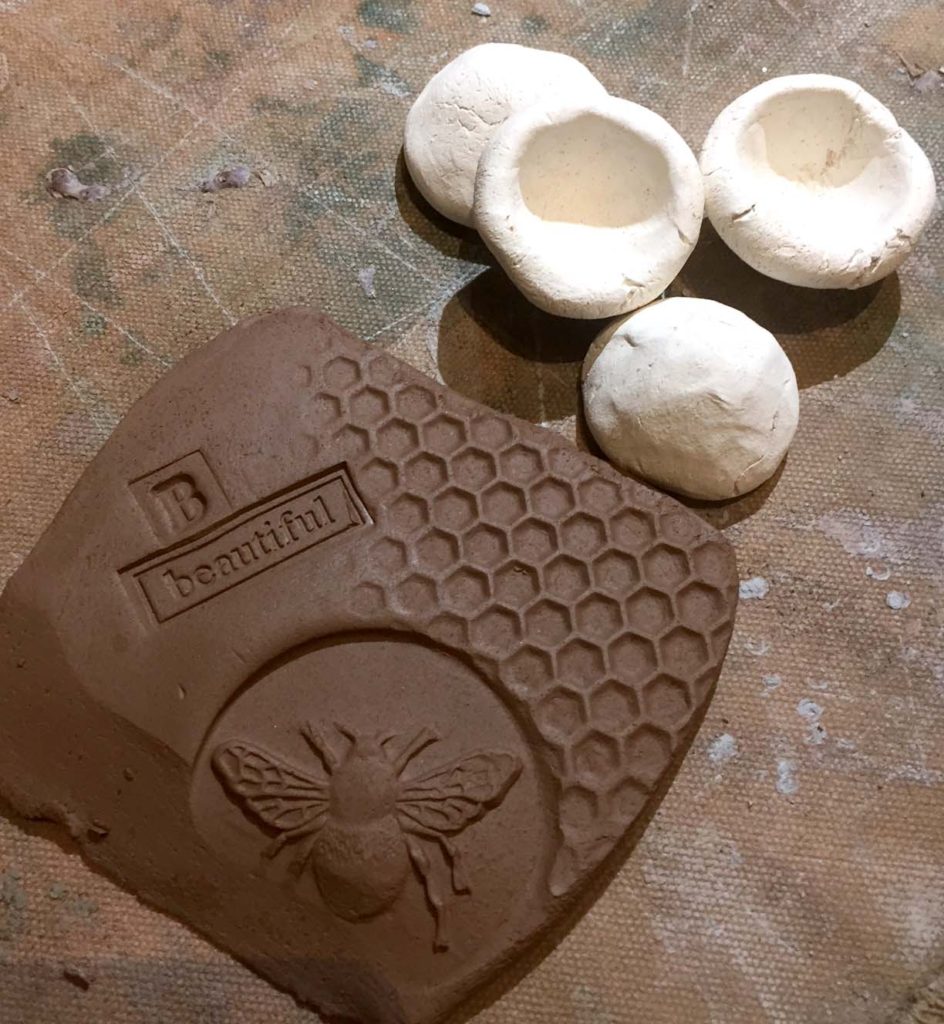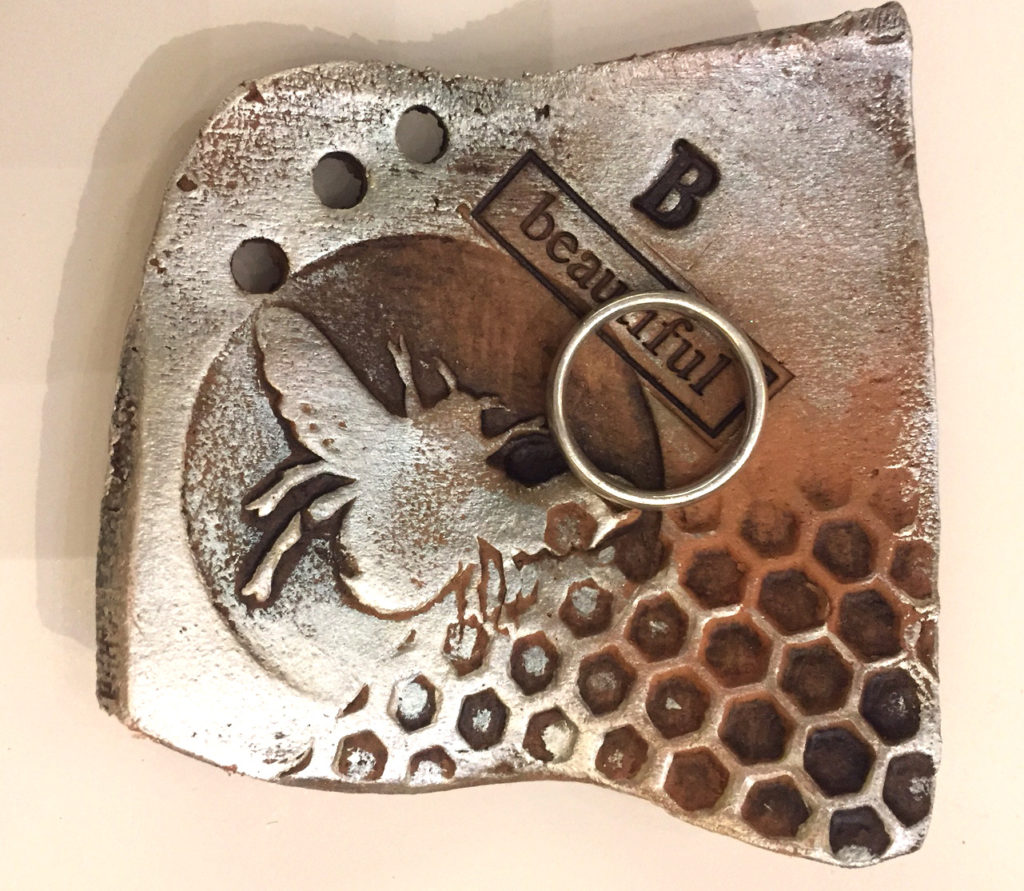These little “Bee dishes” that I make for Marta Stafford’s gallery have proven to be popular – yay!

I donate a dollar from each sale to the Rodale Institute’s Honeybee Conservancy. Besides the fact that bees are vital to the environment in so many ways, they also give us sweet-smelling beeswax, which is vital to encaustic artists!
These bee dishes are made from irregular small slabs of clay, stamped and patterned, and then draped over “something” so they will dry in a slightly concave shape. I had never been able to find a suitable round object to drape them over.
I tried half of a plastic Easter egg, wads of tinfoil, cotton balls – nothing really worked.

The “something” had to be round on top, flat on the bottom, and relative smooth so the design would not be messed up when it was laid over the mold.
It also had to be heat-proof so that I could dry them in the oven and sand the bottoms before they went into the kiln.

Slab form in progress
I finally had an “Aha!” moment about the forms for draping the clay – I am a potter, after all, so could make the “something” myself!

Bee drape molds made of white clay
I rolled some white clay into balls, and formed two dozen small pinch pots to function as little individual drape molds. I fired them, and just tried them out yesterday. Voila! Perfect!

White clay formed into small pinch pots to be used as drape molds

a Bee dish draped over the white clay form
So the white clay mold worked great – it kept the dish from flattening out, and heated it from the inside while it was drying in the oven before sanding.

Bee dish with bottom sanded to flatten it slightly
When I unloaded the kiln, all the little dishes were nicely concave and were ready to be finished with walnut ink and metallic wax – the small hand-formed clay drape molds worked!

Bee dishes fresh from the kiln without their walnut ink enhancement

Bee dish as a ring holder

A lot of making art is about engineering and problem-solving, whether you’re painting or doing assemblage, fiber art or photography. Construction and composition are vitally important, and figuring it out is fun.
Here is the new crop of Bee dishes – Marta sells them for $12 and part of the money goes to a very bee-you-tiful cause. Hooray for artistic problem-solving!

